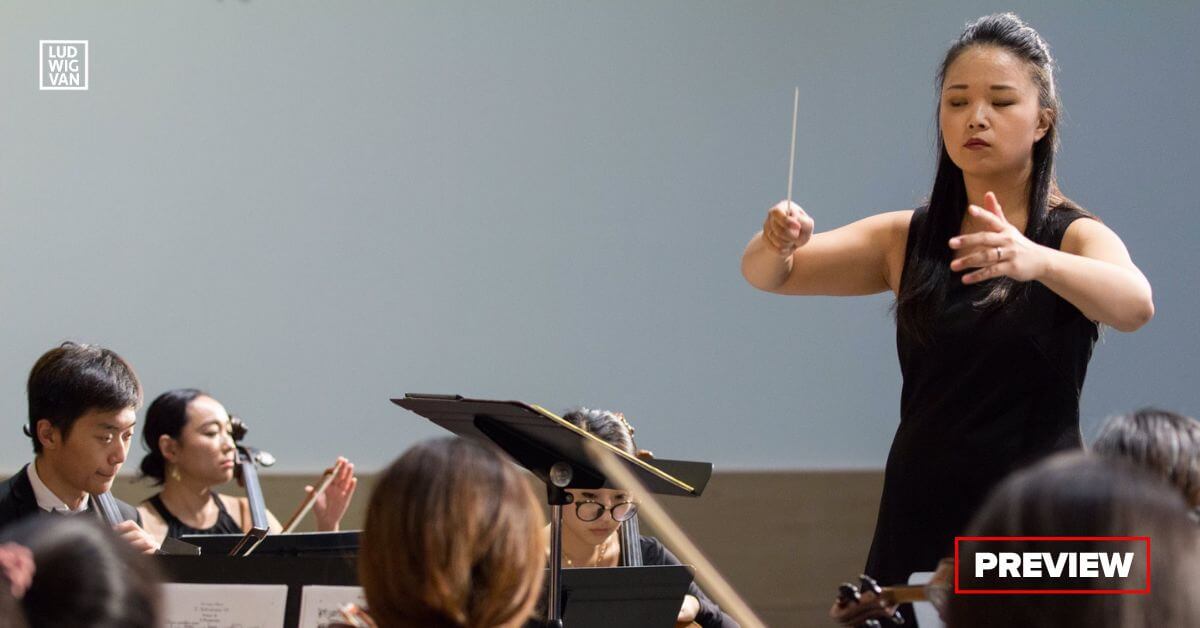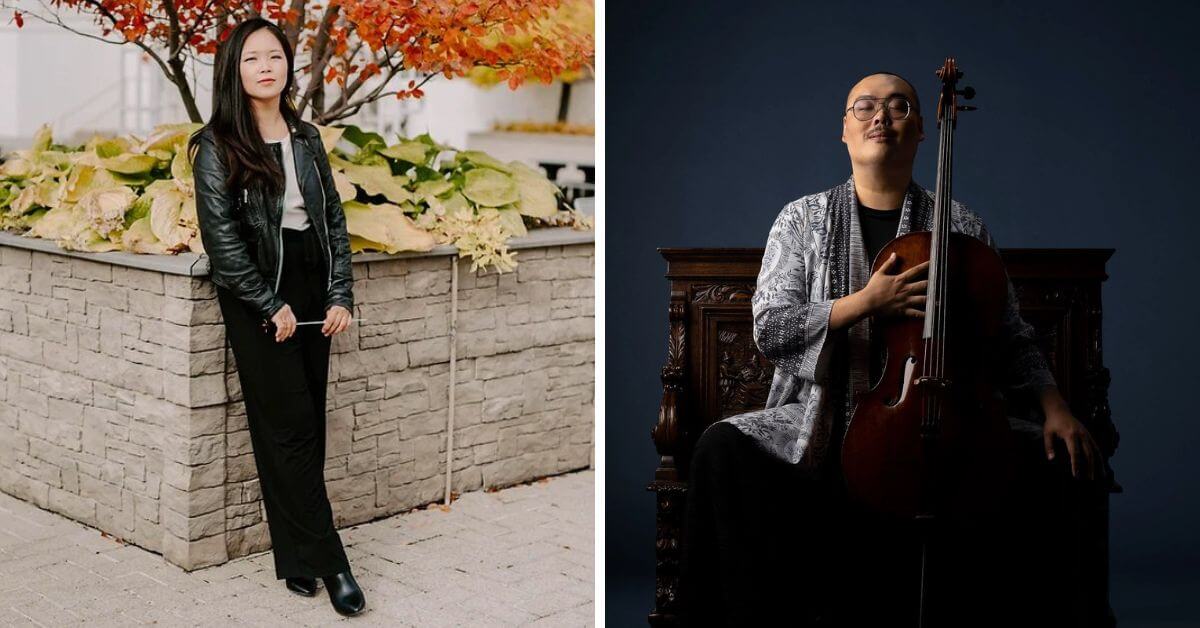
The Korean Canadian Symphony Orchestra’s mandate is to promote excellence in classical music performance, while using the music’s universal appeal as a bridge between cultures. Their next concert takes place on February 15, and spotlights the work of Antonín Leopold Dvořák.
It’s part of the KCSO’s 36th season.
Founded in 1987, the Korean Canadian Symphony Orchestra draws on the city’s deep talent pool of classical musicians. Maestra Sharon Lee, the KCSO’s conductor, is well known as a violinist and chamber musician as well as an orchestra leader.
Sharon Lee, conductor
Sharon Lee was appointed as the organization’s first woman conductor in 2019.
A recipient of the Ontario Arts Council’s Orford String Quartet Award in 2008, Lee has performed in a wide variety of chamber ensembles, including holding the position of Concertmaster and Co-Artistic Director with Toronto Concert Orchestra, and Artistic Director of the Korean Canadian Chamber Players.
She began studying music as a child, and had her concerto debut by the age of ten. Sharon found her calling as as musician through the various youth orchestra programs offered in Toronto. She is a founding member of the Cecilia Quartet, an ensemble that has performed across the world. The Cecilia Quartet earned fellowships at Schleswig-Holstein Meisterkurse, the Aspen Music Festival, and an official selection to the Melbourne International Chamber Music Competition.
Other awards include the Fenyves String Scholarship. Sharon won her first job as Principal Second Violin of the Thunder Bay Symphony at age 26.
As a musician, she is equally as adept with modern music as she is with centuries old repertoire.

Daniel Hamin Go, cellist
Daniel’s music education took him through seven institutions in five countries, along with masterclasses. He earned a Bachelor of Music from the Manhattan School of Music, following it up with a Master of Music at the Hochschule für Musik ‘Hanns Eisler’ Berlin. He completed an Advanced Diploma at the Royal Academy of Music as a recipient of the Bicentenary Award and the Drake Calleja Trust Award.
Daniel was an artist-in-residence at the Queen Elisabeth Music Chapel during 2021-22, and in 2022-23, he held a fellowship position at the Royal Conservatory of Music’s Rebanks Family Fellowship and International Residency Program.
He has performed extensively across North America and Europe as a soloist, and in collaboration with prominent musicians such as Fazil Say and Jean-Claude Venden Eynden. Daniel has played on some of the world’s finest concert stages, including the Berliner Philharmonie, Carnegie Hall, and Konzerthaus Berlin, among others.
As a chamber musician Daniel is a founding member Duo Beattie-Go with guitarist Tim Beattie, and Duo Therrien-Go with pianist Jean-Luc Therrien.
Daniel performs on a Cremonese cello crafted by Francesco Rugeri in 1690.
The Concert
The program includes two of Dvořák’s significant and most beloved works: Symphony No. 9 From The New World, and the Dvořák Cello Concerto.
The composer’s iconic Symphony No. 9, ‘From the New World’ was influenced by his time in America. He was the director of the National Conservatory of Music of America from 1892 to 1895, and became interested in Native American and African-American music during his tenure. He recognized their beauty and intrinsic value as the folk music of the new nation, and incorporated the musical idioms he discovered into the work. Commissioned by the New York Philharmonic, it premiered in NYC in 1893.
Dvořák’s Cello Concerto is a showcase for the instrument’s capabilities, both technically and expressively. The Cello Concerto in B minor, Op. 104, B. 191 was the last solo concerto the composer would write. He composed the work for his friend, cellist Hanuš Wihan, in 1894. While Dvořák started, but never completed, a cello concerto as early as 1865, he had refused multiple requests for such a piece prior to Wihan, on the grounds that the cello wasn’t a proper solo instrument. With Wihan, he relented. The composer would only grant minor changes that Wihan asked for, and published it with the stipulation that it could only be performed exactly as written – and in particular, without the cadenzas Wihan had suggested. While Dvořák still wanted Wihan, contractual wrangling saw it premiere in London in 1896, performed by English cellist Leo Stern.
- Tickets and more information about the concert on February 15 at the Richmond Hill Centre for the Performing Arts [HERE].
Are you looking to promote an event? Have a news tip? Need to know the best events happening this weekend? Send us a note.
#LUDWIGVAN
Get the daily arts news straight to your inbox.
Sign up for the Ludwig Van Toronto e-Blast! — local classical music and opera news straight to your inbox HERE.
- PREVIEW | Upper Canada Choristers Celebrate 30th Anniversary With World Premieres, New Beginnings - May 3, 2024
- THE SCOOP | Could The Kitchener Waterloo Symphony Be On The Road To Renewal? - May 3, 2024
- PREVIEW | The Orpheus Choir Of Toronto Ends The Season With Jocelyn Hagen’s The Notebooks Of Leonardo Da Vinci - May 2, 2024



